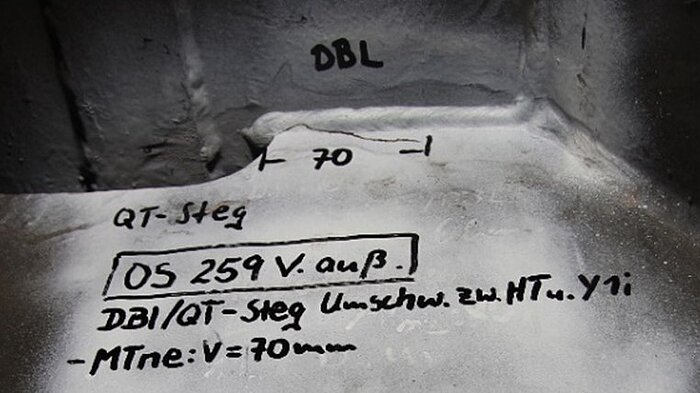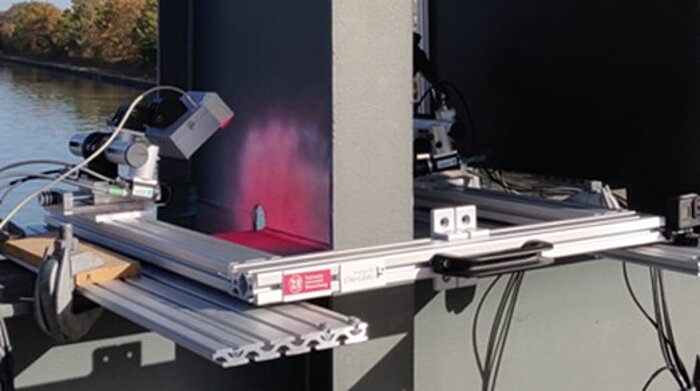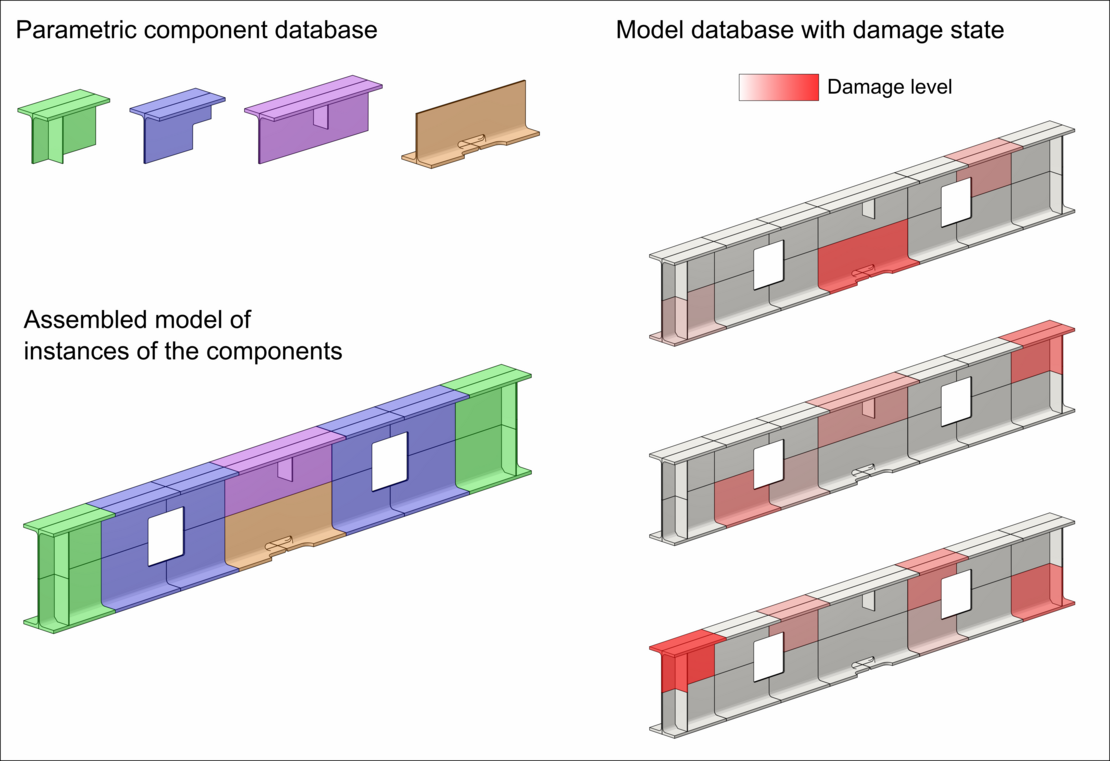Digital twin as an intermediary between in-situ damage detection and global structural analysis
If structures are monitored from the beginning (Structural Health Monitoring, SHM), all information for damage prediction is available. This is generally not the case for existing structures. SHM on real structures aims to determine critical details based on deterministic or probabilistic considerations. Measurements are mainly carried out with strain gauges, displacement and acceleration sensors. Particularly with deterministic considerations, a lot of experience is required in the selection of measuring points. In addition, a certain degradation of the component must have occurred: cracks, corrosion and spalling, so that these can be detected during visual inspections (s. Figure 1).
The particular difficulty in developing suitable models to describe the condition of the structure is that the structures are highly variable in terms of building materials, construction methods, load-carrying structures, loading, age and condition and are subject to permanent change. Therefore, the information is scattered, uncertain and/or highly time-variable. However, the progress of damage to a critical state can take several decades. The information that accumulates on a building over the years has so far a decentralised character. As the connection has not been sufficient until now, many tasks are carried out redundantly, and knowledge already gained can be overlooked. The linking of the information could be done with the methods of Building Information Modelling (BIM), which has been introduced in recent years. So far, however, the special requirements of SHM have only been investigated in rudimentary form, and complete integration has not yet taken place. Questions regarding the handling of complex measurement systems that work on different scales have not yet been sufficiently investigated (s. Figure 2).
Therefore, the aim of this research project is to investigate fundamental questions on the digital linking of local in-situ damage detection methods and conventional SHM via Digital Twins (DT). Based on the investigations from aircraft construction, the concept of the DT principle established there, consisting of components with reduced order, is to be adapted and extended for bridge structures (s. Figure 3). The digital linking of SHM, in-situ DIC measurements and DT is carried out via "optimal classification trees" with "hyperplane splits" (OCT-H) to ensure interpretable machine learning. The particular challenge in the further development of the method for structural engineering is that the damage processes that lead to ageing and abrasion in structures are physical and chemical processes that must be recorded at different scales (material, component, structure level).
The research project focuses on the development of a cross-material and general method for linking in-situ measurements with DT. Other areas to be considered are optimal sensor placement, interpretable machine learning and online structural monitoring.
Project milestones:
Application of physics-based reduced-order models for structural analysis of steel bridges
At the beginning of the project, the application of physics-based reduced-order simulation models (ROM) for (steel) bridges was investigated. The results achieved were comparable in accuracy to established methods such as the finite element method with significantly reduced computational effort. Based on the initial findings, a system for deriving ROM for steel bridges was developed.
Linking monitoring data and simulation models with interpretable machine learning
In order to adapt the simulation models to monitoring data and thus identify damage, optimal classification trees from the field of interpretable machine learning were used in addition to classic mathematical optimization methods. The methodology was tested using synthetic measurement data on a real-scale bridge, which reveals that real-time application is possible.
Damage identification on a real-scale steel bridge
The investigated methods were then used to identify realistic damage based on synthetic measurement data on a real steel bridge. This showed that the method is fundamentally suitable for detecting and localizing even minor damage.
Experimental tests on laboratory structures
Experimental tests on steel structures are currently being prepared and implemented on a laboratory scale. For this purpose, steel beams with cut-outs are subjected to cyclic loading and the condition of the structure is continuously monitored using a comprehensive monitoring system. This includes fiber optic sensors, digital image correlation (DIC), strain gauges, crack sensors and laser scanning. The experimental results are then used to validate and extend the methodology.
Contact
Publications
Peer-Reviewed Journal Paper
Brenner, C.; Thiele, K.; Unglaub, J. (2024). A Hybrid Approach to Damage Identification for Steel Bridges with Discrete Cracks. In Structure and Infrastructure Engineering (accepted)
Conferences and other publications
Brenner, C.; Thiele, K.; Unglaub, J.: A Reduced-Order Digital Twin for Structural Health Monitoring of Steel Bridges. IWSHM 2023 - 14th International Workshop on Structural Health Monitoring, September 12-14 2023, Stanford, USA.
Brenner, C.; Thiele, K.; Unglaub, J.: Constraints of local stiffness adaption for reduced-order models of large-scale steel bridges. EWSHM 2024- 11th European Workshop on Structural Health Monitoring, September 10-13 2024, Potsdam, Gemany.
Brenner, C.; Thiele, K.; Unglaub, J.: A data-driven approach for linking models of large-scale bridges and monitoring data. SMAR 2024- 7th International Conference on Smart Monitoring, Assessment and Rehabilitation of Civil Structures, September 4-6 2024, Salerno, Italy.
Weiser, R.; Unglaub, J.; Thiele, K.: Vehicle classification using BiLSTM for predictive maintenance and Digital Twins. SMAR 2024- 7th International Conference on Smart Monitoring, Assessment and Rehabilitation of Civil Structures, September 4-6 2024, Salerno, Italy.
Brenner, C.; Thiele, K.; Unglaub, J.: Comparative Analysis of Simulation Models for Digital Twins and Damage Identification on Bridges: A Steel Bridge case study using Strain Measurements. IWSHM 2025 - 15th International Workshop on Structural Health Monitoring, September 9-11 2025, Stanford, USA. (submitted)







